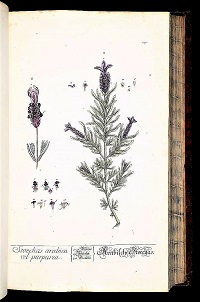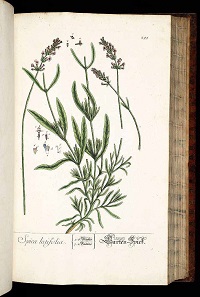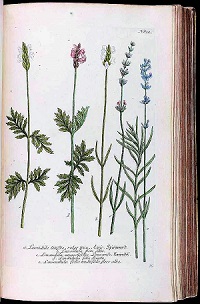 Many of us have heard of English, Spanish, and French lavender, but when you find out that English lavender is found in the fields of Provence and French lavender is actually native to Spain, it can get really get confusing.
Many of us have heard of English, Spanish, and French lavender, but when you find out that English lavender is found in the fields of Provence and French lavender is actually native to Spain, it can get really get confusing.
There are many, many different families and relatives of lavender, and each member of each family lends itself better than others to specific uses. And to make things even more interesting, of course there are hybrids in the mix! Since distinguishing the numerous varieties can get complex, here I am sharing my favorites in a simplified reference outline:

1. English Lavender or True Lavender
a. Lavandula angustifolia- native to Mediterranean - often grown in Provence
i. Munstead
Uses: Culinary, Essential Oil, Infusion
Many lavender varieties have an intense fragrance with powerful camphor notes. English lavender, however, tends to have a sweet, citrus scent which blends beautifully with sweet, citrus flavors, therefore making it the best culinary option. True Lavender essential oil is also the best lavender variety for calming anxiety, stress and encouraging sleep. This essential oil is quite expensive as it yields marginal amounts of essential oil, with yet the purest calming and soothing properties.


2. French Lavender
a. Lavandula dentata - native to Spain
Uses: Fresh or Dried Bouquets, Wands, Sachets
French lavender is slightly more pungent than English Lavender and it grows on elegant long stalks. For this reason, I like working with French Lavender for wands or cutting it for bouquets. Although lavandula latifolia has a stronger camphor fragrance, which I prefer for sachets, lavandula dentata buds are fairly easy to harvest and also make lovely, fragrant sachets.

3. Spanish Lavender
a. Lavandula stoechas - native to Mediterranean and North Africa
Uses: Smudge Bundles, Soap, Candles
Although the essential oil from both French and Spanish Lavender is more abundant than the oil from English Lavender, Spanish and French essential oils are not of equal quality. However, both are fantastic for soap and candle making. Further, because the oil is so concentrated in the Spanish Lavender buds, this particular lavender is my first choice when making smudge bundles. The smoke from Spanish Lavender sprigs added to white sage bundles has a sweet scent and peaceful energy.
,

4. Portuguese Lavender also called Spike Lavender
a. Lavandula latifolia - native to Western Mediterranean
Uses: Soap, Essential Oil, Incense
Spike Lavender has a strong camphor scent and is associated with easing aches and pains. For these properties, Portuguese Lavender is wonderful in oil infusions and pain relief salves. It is thought to be more energizing and stimulating than True Lavender and therefore more aligned with concentration and focus. After the buds have been harvested, the long stalks of the Spike Lavender plant are often bundled and burned as incense to scent and cleanse the air.

5. Lavandin - Hybrid cross between Lavandula angustifolia (English Lavender) and Lavandula latifolia (Portuguese Lavender)
a. Lavandula x Intermedia
i. Grosso
ii. Provence
iii. Hidcote
Uses: Sachets, Wands, Infusions, Essential Oil, Pressed Flowers, Candles
As with any hybrid, Lavandin offers combined highlights from its ancestral lavender roots, lavandula angustifolia and lavandula latifolia. I love Grosso lavender for its long stalks, high oil yield and heavenly scented flowers. The flowers from the Grosso lavender plant are intensely fragrant, perfect for sachets and infusions. I also appreciate the Hidcote lavender plant for its deep violet color, a gorgeous accent to bath salts, candles or in bouquets.

"It always seems to me as if the lavender was a little woman in a green dress, with a lavender bonnet and a white kerchief. She's one of those strong, sweet, wholesome people, who always rest you, and her sweetness lingers long after she goes away."
~Myrtle Reed